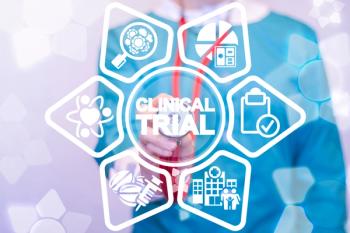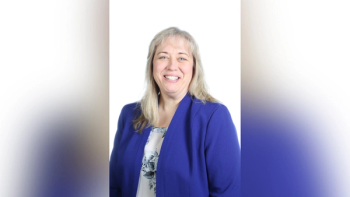
- Applied Clinical Trials-04-01-2023
- Volume 32
- Issue 4
How to Rescue ‘Failed’ Clinical Trials and Minimize Risks
Strategies for intervention—or, ideally, averting potential pitfalls from the onset.
As with another oft-mentioned path, the road leading to regulatory approval is paved with good intentions. Clinical trials testing molecules once deemed to be of financial and medical value can, metaphorically at least, be found stacked up outside the regulator’s door.
The many factors that halt a trial’s successful progress are a rote recitation at this point: safety, efficacy, management, and enrollment.
But do all trials dubbed failures deserve that fate? Can some be rescued, turned around? The short answer is yes. But the more efficient way to reach a regulator’s open door is to minimize the risk of that trial going belly up, before it starts.
It takes time to do that, says Heike Schön, managing director, Lumis Life Science Consulting GmbH. If the right things are done before the trial starts, it is easier to manage, she adds.
For some researchers, those right things have to happen way before the trial starts, such as during drug discovery and preclinical research. For other experts, like Schön, the right things include reconsidering the trial design; assembling a heterogenous group of key opinion leaders (KOLs) to review the protocol; keeping answers sought in a trial to a minimum; and incorporating real-world data (RWD) where possible.
“Everyone understands that there is a lot better we can do,” Frank David, MD, PhD, managing director, Pharmagellan, tells Applied Clinical Trials.
But while drug discovery is mostly about science, drug development is rich with, and risked by, human drama.
Unless shareholders understand the amount of time and money involved in reaching approval, dead trials can pile up.
Change must come gradually, says Duxin Sun, PhD, associate dean for research, Charles R. Walgreen Jr. professor of pharmacy and professor of pharmaceutical sciences, College of Pharmacy, University of Michigan.
For the last decade or so, the Sun lab has been studying whether validation of a new molecule should also include its effect on the disease target tissue vs. normal tissue. His team published last fall.
“Scientists are very hard to convince,” says Sun. “If the trial is at Phase II, no one wants to listen. It’s their baby … Every expert has their own vision.”
What follows is a discussion on how to advance industry’s good intentions.
Putting tissue in the game
David’s clients seek him out generally at the Phase II “live-or-die” juncture. As he put it, there is failure and then there is not enough success. A drug can get to the target, but not the right spot. Or vice versa. “If I get to the right place but I can’t hit the target, do I not have the right drug?” asks David.
Sun has had the same thoughts for some time. Just looking at a molecule’s structure, its biological activity, target selectivity, and potential for toxicity is not enough to pinpoint the right drug candidate. Disease vs. normal tissue, he says, is an important consideration to add, because learning about the toxic levels of a drug in healthy organs often comes too late in the clinical trial process.
Investigators looking for molecules targeting the central nervous system do this now. Those drugs must travel beyond the blood brain barrier to get to the appropriate brain tissue.
“It is well accepted that if a drug candidate has difficulty penetrating [the blood brain barrier] to reach brain tissue, it will not achieve adequate efficacy, which shall be terminated early in drug development,” Sun and his colleagues wrote last year in a published report.1
In animal studies, he says, if a drug isn’t working then the dose is increased. “Animals can’t tell you they are dizzy,” says Sun.
In the Sun lab paper,1 the team looked at drug approval and failures in particular classes. More than 600 trials have been conducted for selective estrogen receptor modulators; 11 have been approved. “Some have very similar structures with only very slight modifications, yet they have shown distinct efficacy in [treating various diseases and disorders,]” explains Sun. “Their structure-activity relationship and drug-like properties cannot fully explain the difference among their clinical dose, efficacy, and toxicity.”
How money is spent on lead optimization should change, he adds. “We put 90% of the cost [to structure‒activity-relationship]. Dropping that percentage to 60%, and then the rest to study the cell type, makes sense,” he adds.
Sun says he wanted to begin a discussion with his proposal; Christina M. Brennan, MD, is senior vice president, clinical research at Northwell Health and the Feinstein Institutes for Medical Research, was sent a link of the Sun lab’s work. She says the hypothesis was innovative. “As it relates to drug discovery, it makes sense.” Among the 2,000 or so trials being run at Northwell, Brennan says that “we are seeing more [sponsors] reusing molecules, or reusing drugs for a different indication rather than starting a new drug.”
Technology
David says pharma is spending “a ton of effort” on organ-on-a-chip technology, the Lego-looking piece of microengineering that incorporates the characteristics and functions of bodily organs. It is meant to replace the often-misleading animal experimentation. “Safety signals, when they kill programs, they kill them very late,” he notes. But with the chip, “If you have a worrisome signal from that assay, then you might think twice before putting it into a trial.”
Sun is on board with organ-on-a-chip technology if it is validated, as various models can show how some tissue prevents drug penetration or how other tissue, like a tumor, is organized—the organization affects the drug’s binding capabilities.1
The right translation tools help companies make the right decisions,” says David. “If you run a skimpy early clinical plan in a vacuum, it can be harder to decide whether to give it up or not.”
As for artificial intelligence (AI), its usefulness depends on the quantity, quality, and heterogeneity of the available data. According to Brennan, it can help with matching molecules to disease. AI could help at some point to create a protocol “that has global reach,” says Schön.
The use of RWD and real-world evidence (RWE) in the trial must be included, notes Brennan. The protocol of a global trial, adds Schön, must reflect the different characteristics of its participants, such as those with different metabolisms. The value of RWD is “always underestimated,” she believes.
A driver of this perception may be that RWD is not always accessible. It will take partnering with technology companies in the AI space when protocols are being developed, says Brennan. Sun was more pessimistic, believing there isn’t enough AI-generated data for his work. “Nobody is going to share,” he says.
Adaptive design
A few years ago, Philip Pallmann, PhD, senior research fellow (statistics), deputy director RDCS South East Wales, Center for Trials Research, College of Biomedical and Life Sciences, Cardiff University, and a few colleagues wrote in BMC Medicine that, essentially, adaptive design is a good idea. So far, the paper has been accessed 106,000 times. It cites case studies in which adaptive design saved the day.
“The defining characteristic of all [adaptive designs] is that results from interim data analyses are used to modify the ongoing trial, without undermining its integrity or validity,” they wrote.2
Case in point: researchers re-estimated the number of patients needed for a trial on severe chronic angina after the standard deviation of the main endpoint turned out higher than originally estimated. By including more patients, the study reached its endpoint. In other words, the trial was saved. Other work has shown that the duration of trial phases—adaptive design to randomized controlled trials (RCTs)—are shorter. Of interest is that the sample size of Phase II trials, again adaptive design to RCTs, was larger.3
“These options to make changes are built into the initial design of the trial from the very beginning, and ‘trigger points’ for making changes are pre-defined,” Pallmann wrote in an email. “You don’t just go off-road at some point, but you get to a fork in the road, which allows you to make an informed decision to take the fastest, or safest, way home.”
Some adaptive designs, he said, allow sponsors to stop a trial or a treatment arm early on if the drug shows little or no benefit. “This means trial sponsors can stop throwing money at something that doesn’t work, but it also means fewer participants are exposed to a treatment that is unlikely to help them, and research efforts can be focused on something else,” wrote Pallmann.
But from a practicality point of view, says Schön, who “totally agrees to it,” adaptive design is more expensive and can stretch resources because the data are needed sooner than it would be in an RCT.
That said, it is valuable in oncology trials for dose changing and ranging, the experts note. They point out that not every trial should be adaptive, because sometimes the additional complexity will outweigh the potential benefits. Regardless, Pallmann believes adaptive design benefits patients, as it allows “better and sometimes faster decision-making” in a trial, and the pros and cons of including adaptive elements should be considered early on in trial design.
Mired in tradition
Schön’s métier is righting the wrongs of a trial’s protocol, which generally reflects the politics and financial goals of the shareholders. For example, sponsors include too many endpoints in a trial because “they want to find [more] target groups, so they ask more questions,” says Schön. The upshot: underpowered trials. They have to stick to their marketing authorization goal. The questions-overload problem is no secret. “They all know that this is the case,” continues Schön. “I was at a roundtable, and we discussed these topics. They all agree there should be fewer questions.”
Brennan notes that of the 2,000 or so interventional trials run at Northwell, few follow adaptive design, whether industry- or Northwell-sponsored. “When you ask sponsors, they say, ‘What a great idea, but not with my trials,’” she explains. “We are not there yet and it’s where we should be.”
A Harvard Business Review study found that “even with a conservative estimate of trial costs, they suggest that competitor learning accounts for more than $2 billion in reallocated R&D funds.”4 The authors separated trials into various groups. Those that shared the same technology had a 23% more likelihood of stopping their trial after a competitor’s trial failed.
Publishing results of failed trials would help, says Schön. She adds that she tried to bring up the topic with colleagues, but to no avail. “They take the lessons learned internally,” she contends.
Words of advice
A trial’s potential pitfalls are often fixable, notes Schön, but “sometimes [sponsors] wait too long, because they think they have [designed] a good protocol.” One way to avoid trouble is to include different experts in the protocol design. Doing so, Schön says, allows design of a protocol that suits the drug and has the potential to reach the finish line. “It takes time to do the right thing at the beginning, [but ultimately the trial is] easier to manage.”
Schön recalls one situation in which the Phase II results didn’t support the primary endpoint, but it was clear the drug had potential. Instead of retesting the molecule, the developer started, and ultimately ended, a Phase III program. The primary shareholder was only interested in this one application, notes Schön. So the company went bankrupt.
Protocol adjustments aside, stakeholders, of course, shouldn’t overlook the human element involved in trial intervention—people’s foils, politics, ambitions, etc. can all impact the drug development process from start to finish. “These are human beings who are working on it, so you will have human behavior,” says Schön. “It should not be underestimated.”
Christine Bahls is a freelance writer for medical, clinical trials, and pharma information
References
- Sun, D.; Gao, W; Hu, H; Simon, Z. Why 90% of Clinical Drug Development Fails and How to Improve it? Acta Pharm Sin B. 2022, 12 (7), 3049-3062.
https://pubmed.ncbi.nlm.nih.gov/35865092/ - Pallmann, P.; Bedding, A.; Choodari-Oskooei, B.; et al. Adaptive Designs in Clinical Trials: Why Use Them, and How to Run and Report Them. BMC Med. 2018, 16 (1), 29.
https://doi.org/10.1186/s12916-018-1017-7 - Bothwell, L.E.; Avorn, J; Khan, N.F.; Kesselheim, A.S. Adaptive Design Clinical Trials: A Review of the Literature and ClinicalTrials.gov. BMJ Open. 2018, 8 (2).
https://pubmed.ncbi.nlm.nih.gov/29440155/ - Krieger, J.L. Trials and Terminations: Learning from Competitors’ R&D Failures. Harvard Business School. June 25, 2020,
https://www.hbs.edu/ris/Publication%20Files/18-043_6eb7092d-9c40-417c-b8ba-5f0fba1876d0.pdf
Articles in this issue
over 2 years ago
Community Pharmacies Can Help Bridge the Diversity Gapover 2 years ago
Helping Rescued Adjudication Committees Get Back on Trackover 2 years ago
Harnessing the Power of Scientific Surveillanceover 2 years ago
Data Standards and ePRO Systems: A Road Less Travelled?over 2 years ago
Raising its Profile: The Changing Practice of Pharmacovigilanceover 2 years ago
Pharmacovigilance vs. Drug Safetyover 2 years ago
Filling the Gaps in European Clinical Trial Reportingover 2 years ago
Kudos and Hurdles in Tackling Rare DiseasesNewsletter
Stay current in clinical research with Applied Clinical Trials, providing expert insights, regulatory updates, and practical strategies for successful clinical trial design and execution.






.png)



.png)



.png)
.png)
